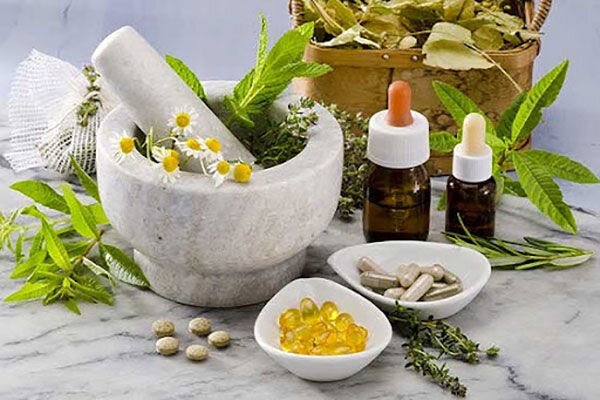Insurance service to be provided for traditional medicine

TEHRAN – The Ministry of Health is planning to start offering insurance services for at least three branches of traditional medicine by the end of the current Iranian calendar year (March 20, 2024).
Considering the necessity of integrating traditional medicine services in the health system and covering at least three services by the end of the year, this important issue has been seriously placed on the agenda of the Ministry of Health, Nafiseh Hosseini Yekta, the director of the health ministry’s Persian medicine office, said.
Currently, visiting traditional medicine specialists and a limited number of traditional medicines are covered by insurance, she added, IRNA reported.
“Also, insurance coverage of lifestyle-related packages is one of the other things that we follow,” the official highlighted.
Iran ranks fourth worldwide in the production of science in the field of traditional medicine, and the remarkable achievement will improve in the coming years, Hosseini Yekta noted.
“Over 17,000 books have so far been published about Persian traditional medicine, which has been recognized by the World Health Organization.”
Iranian traditional medicine strongly focuses on prioritizing health maintenance and disease prevention over treatment.
It is one of the most ancient forms of traditional medicine. It is grounded in the concept of four senses of humor: phlegm (Balgham), blood (Dam), yellow bile (Safra'), and black bile (Sauda'). The concept of the four senses of humor is based on the teachings of Rhazes and Avicenna in an elaborate medical system.
So far, about 30,000 plant species have been identified in the world, with Iran's share of about 8,000 species which is more than the whole of species found in Europe.
The per capita consumption of medicinal plants in Iran is about one kilogram of dried plants, in other words, 83,000 tons of medicinal plants worth 1.2 trillion rials (around $4 million) are consumed in the country, while in Europe this amount is 900 grams and in the United States is 2.5 kilograms.
Iran Health Insurance Organization, together with the Ministry of Health, provided important and significant services in different sectors during the past year (March 2022-March 2023).
Providing free insurance for low-income families, paying the medical expenses of infertile couples, providing services to the disabled, supporting patients with rare diseases, and providing services to foreign nationals have been done in the past year, IRNA reported.
The government has adopted policies to identify uninsured people. In this regard, the Health Insurance Organization in cooperation and interaction with the Social Security Organization was assigned to identify uninsured people, who are often from the vulnerable groups of society.
Accordingly, some 90 percent of hospitalization costs and around 70 percent of outpatient treatment costs are covered by insurance.
In this regard, by allocating 50 trillion rials (about $100 million), 107 rare diseases are covered by the health insurance fund, and with the cooperation of universities, a lion’s share of treatment costs are paid by the government.
So far, more than 31 rare and special diseases, including high blood pressure, MS, type 2 diabetes, hemodialysis, thalassemia, kidney transplant, hemophilia, diabetic retinopathy, type 1 diabetes, cystic fibrosis, and autism, have been identified in the system of the Health Insurance Organization.
Articles on traditional medicine
From 2006 to 2021, the publication of Iranian articles in the field of traditional medicine has increased by about ten times, according to data released by the SCImago Journal of Traditional Medicines.
Accordingly, Iran is fourth in the world after China, India, and the U.S., IRNA reported.
The number of articles published by the country has increased from 59 in 2006 to more than 500 in 2021.
By providing the structure in the Ministry of Health, and the establishment of traditional medicine colleges in 2006, the number of articles in the field of traditional medicine increased by about 10 times in 15 years.
The Islamic World Science Citation Center (ISC) put the share of Iranian articles in the field of medicinal plants and herbal medicine in the world at 5.9 percent.
A plan for the integration of Iranian traditional medicine into the health network is supposed to be implemented in the first phase in 14 faculties and universities of Shahid Beheshti Medical Sciences, Mashhad, Shiraz, Tabriz, Kerman, Yazd, Kashan, Babol, Golestan, Mazandaran, Hamedan, Qom, Fasa, and Isfahan.
In case of successful implementation, other universities in the country will also be encouraged to launch the plan, she said, adding, in the next phases, the integration plan will be implemented at higher levels and in the field of treatment.
Hossein Farshidi, the deputy health minister, has said that one of the shortcomings of the country's health network system, which has been emphasized a lot in the national development plans, is benefiting from thousands of years of experience in Persian traditional medicine.
“We all must join hands to improve Persian traditional medicine and integrate it into the country's health network system.”
He went on to note that if primary healthcare is not paid the necessary attention as the basis of all health services, we may not be able to control the heavy burden of chronic diseases in 50 years.
MG
Leave a Comment